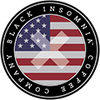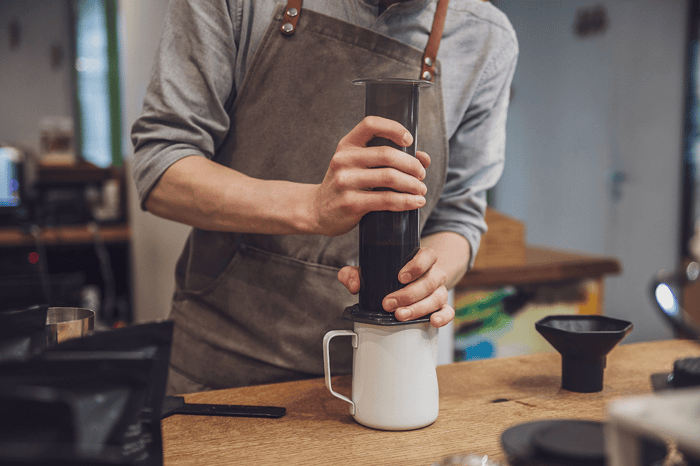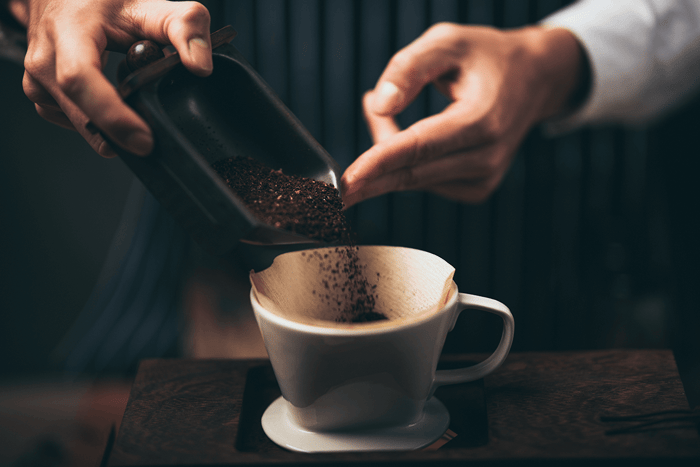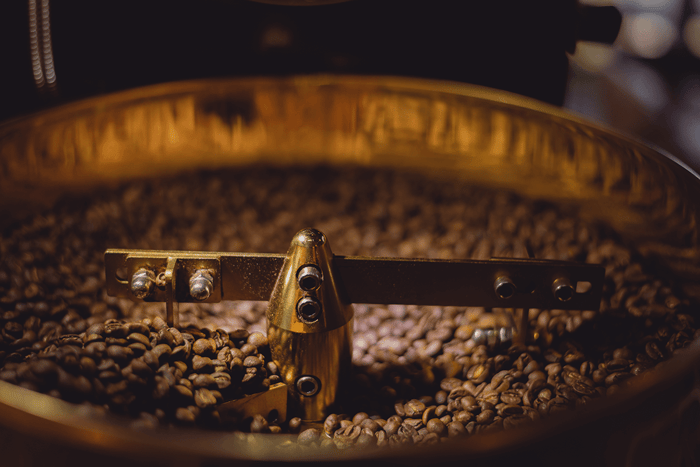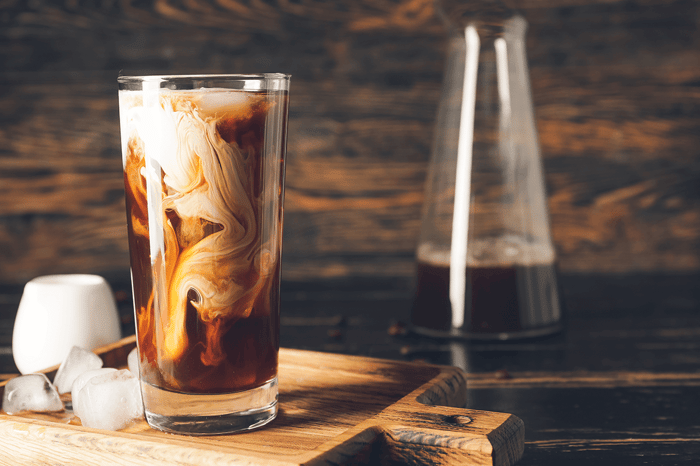Welcome to the great debate: Pour Over vs French Press.
In this corner, we have the Pour Over brewing method, championed by coffee snobs everywhere.
In the other corner, we have the French Press, beloved by those who appreciate a bold, straightforward approach to their coffee.
And in the other corner, we have the Keurig, because this is America. Wait, how many corners does this room have? Since when do debates have people in corners?
Scratch that last one—we're going to stick to the "Pour over vs French press" debate.
Will Pour Over be a push over? Will the French press press the issue? Which brew is right for you?
Let's take a closer look at these two contenders.
(And sorry Keurig, we love you—you could'a been a contender.)
The Pour Over Method: All About Control

The pour over method is all about manual control and precision.
Coffee aficionados will tell you that the key to a perfect cup of coffee is in the grind and in the pour.
The beans must be (or should be) ground to perfection, and the water must be (or should be) poured over them in just the right way.
This can be a bit of a challenge for those who are new to the pour over method, but once you get the hang of it, it's not that difficult. At all. Of course, you wouldn't know this from listening to those who preen over their pour over skills like they're some sort of coffee god.
Note: While the pour over method does require a bit of precision, it's really not that difficult to master. At all. Just follow the instructions in our Ultimate Brew Guide and you'll be fine.
The French Press Method: All About Bold

The French press, while it seems "advanced" to a lot of people who brew their coffee at home, is all about boldness—and simplicity. You don't need to be that precise with your grind or your pour—of course, you'll be rewarded with better taste and texture if you are more precise. But as long as you don't leave the grounds steeping in the water for too long, your results will be perfectly acceptable if you're not. (See our guide: How to Use a French Press.)
But, in general, you just add the coffee grounds and water to the pot, give it a good stir, and let it steep for a few minutes. Then all you have to do is press down on the plunger to filter out the grounds and enjoy your cup of coffee.
The hardest part is probably figuring out exactly how coarse or fine to grind your beans. But once you get that part locked in, you're golden.
Espro P7 Coffee French Press
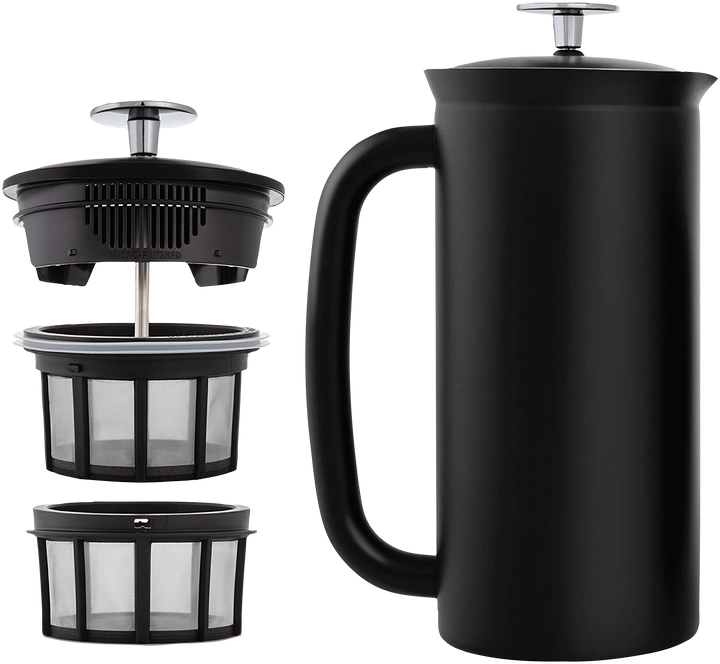
$119.99
Good coffee deserves a good brewer and the Espro P7 is just that. You expect the most out of your Black Insomnia coffee and Espro's P7 delivers! Unlike many french presses Espro's patented double filter leaves your cup free of… read more
Let's recap:
Pour Over vs French Press: Pros and Cons
Pour Over Brewing
Pros:
- Can produce a "cleaner" cup of coffee with fewer bitter undertones
- Can also produce a cleaner cup of coffee in the sense that you're less likely to have grounds in the final cup.
- Possible to brew more cups of coffee at once than most French Presses would allow
Cons:
- Requires a little more love and attention (read: time and effort) than the French press
- Can be more difficult to master than the French press, since so much of the brewing process depends on your input.
French Press Brewing
Pros:
- Produces a stronger, bolder, more full-flavored cup of coffee than pour over
- Can be less expensive than the pour over method
Cons:
- May produce a harsher, more acidic cup of coffee (especially for beginner French pressers)
- Cleanup is a little more involved than the pour over method (emphasis on "a little more")
- Some French presses allow more grounds into the final cup than the pour over method. Certain ones, like the Espro French Presses, are better at this than others.

What They Have in Common
Maybe these two brewing methods aren't so different after all.
- They're both good "gateway" home brewing methods for people currently drinking drip coffee who want to move up to the next level, or for people currently drinking instant coffee who want to move up 5 levels.
- Both methods also rely on a filter—a paper cone filter or a reusable pour over filter for the pour over method, and (usually) a metal mesh filter for the French press.
- Both the pour over method and the French press rely on your grind. If you don't have a good, consistent grind, your coffee will suffer.
- Both the pour over and French press methods require a bit of finesse to master—but once you get the hang of it, they're both pretty easy to do on a daily (or thrice-daily) basis.
- Both methods can also produce a "perfectly" delicious cup of coffee—it's all up to your personal preferences and what's most important to you in your coffee.

The Conclusion
Which brewing method is better? It really depends on what you're looking for in your cup o' java:
If you want an evenly balanced cup with less bitter undertones and no grit, and don't mind spending an extra minute or two making your coffee, then the pour over method is a solid bet.
If you're looking for a bolder, more full-flavored cup of coffee that's easy to replicate, then the French press is probably your best choice. If you think French Press coffee might be for you, see our article comparing the Espro P5 and Espro P7 French press.
And if you want a terrible cup of coffee that's easy and convenient to make, stick with instant coffee—or better yet, just drink a cup of water with some brown food coloring in it. It'll taste about the same and save you a few bucks. You're welcome!
